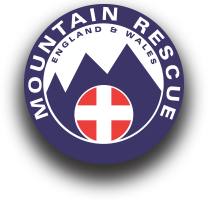The Search And Rescue Dog Association was formed in Scotland in 1965. Hamish MacInnes, team leader of Glencoe Mountain Rescue Team had attended an International Red Cross Search Dog course in Switzerland where avalanche search dogs were being trained and assessed.
He saw the potential for using dogs to search for lost walkers and climbers within the UK and, on his return to the UK, Hamish started training his two German Shepherds, Rangi and Tiki.
In Dec 1964 a training course with Mountain Rescue members from throughout the UK was held in Glencoe. Encouraged by this course, and the potential shown by the dogs, a meeting was held in May 1965 and the Search and Rescue Dog Association (SARDA) was formed and initially covered the whole of the UK.
By 1971 it had become devolved into Scottish, English and Welsh associations. Further developments led to the modern day, with the present formation of Associations: England, Lake District, Ireland North, Ireland South, Scotland, Southern Scotland, Wales, South Wales, and Isle of Man.
The National Search And Rescue Dog Association (NSARDA) was formed to represent the associations at a national level with other National Authorities.
[/spoiler] [spoiler title=”Why Dogs?”]
Search dogs are trained to ‘Air Scent’ so, as a general rule, they do not track the missing person, but react to wind borne human scent.
When deployed skillfully by an experienced handler, the dog should find a person in its search area, as long as it is searching downwind of a casualty or items of clothing or belongings, which have human scent on them.
A dog can cover large areas of ground, including difficult terrain and woodland in the search and is very sensitive to any human scent it finds. It will immediately follow a scent to its source. It will then ‘indicate’ to its handler, usually by barking, to let them know it’s made a ‘find’. It is not unusual for a dog to pick up a scent from a missing person, 500metres or more away.
It matters not whether it’s dark or very poor visibility, the dog can search just as well as if it were a clear day. However, if there is no wind or it is storm force, the human scent will not carry as far and the handler will compensate for this by shortening the sweeps of the area. This will take more time to search an area, but get a higher ‘Probability of Detection’ (POD).
There are no definite ‘POD’ figures for search dogs, however, of the dogsbodies deployed in assessments, in excess of 96% are found.

